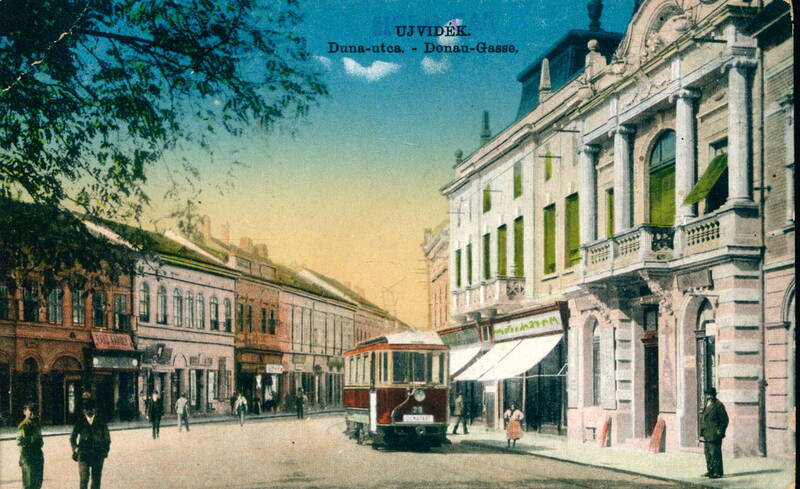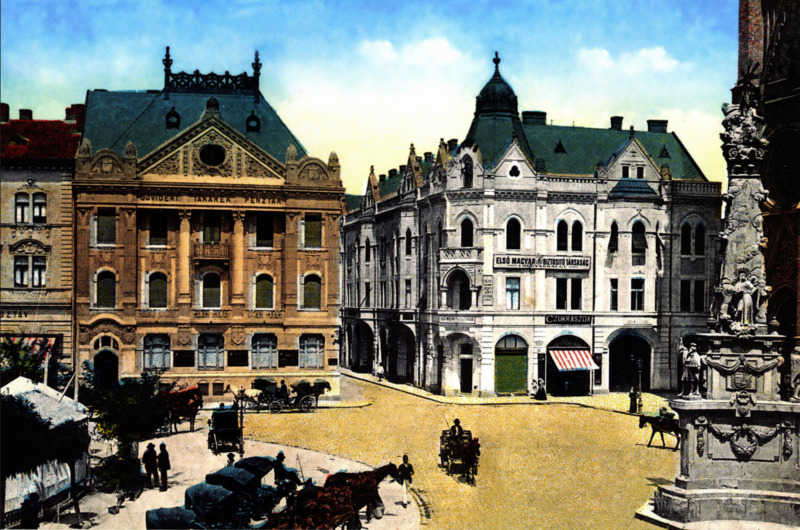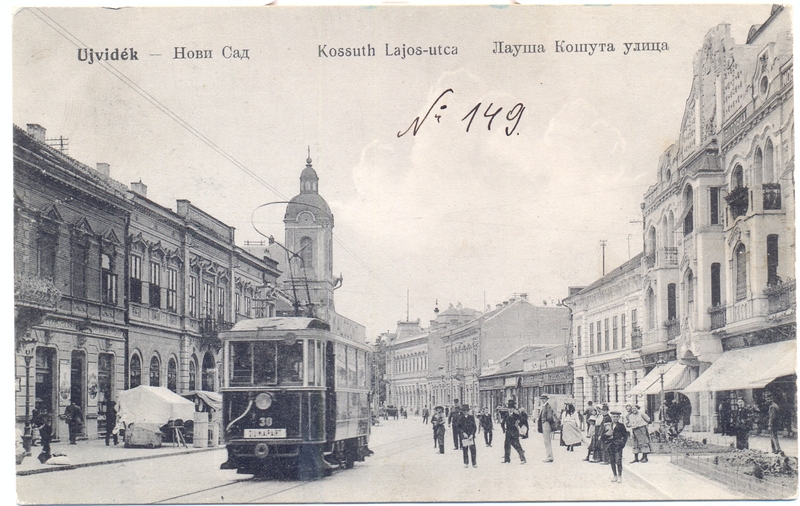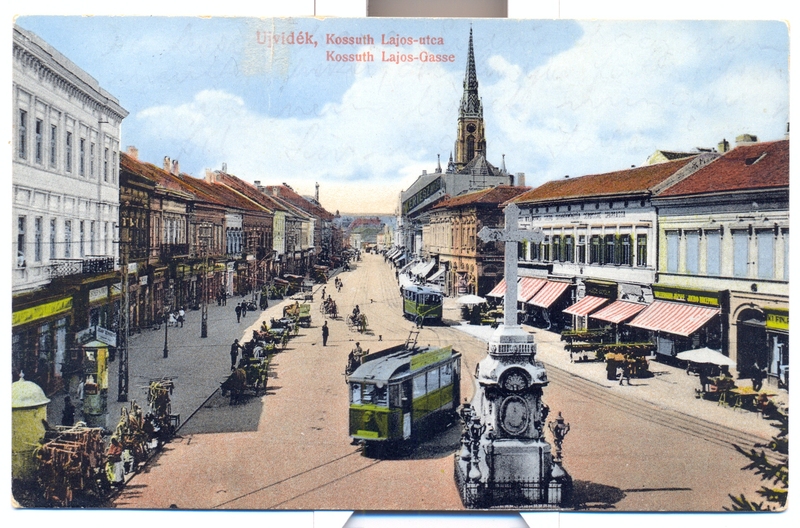Traffic in Novi Sad

THE BEGINNINGS OF TRAFFIC IN NOVI SAD
The Danube was the most important connection between Novi Sad and Central Europe. Until the appearance of the first steamboats in 1830, all boats used oars and sails. Downstream, they were carried by the current of the river, while upstream they were pulled by horses with boatmen, prisoners condemned to pull the boats, or hired boatmen (“hojošiˮ or “bećariˮ).
The other type of transportation was carried out by carriage roads. One of the main road routes between Austria-Hungary and Turkey went through Novi Sad, through todayʼs streets Pašićeva and Dunavska and then across the pontoon bridge to Mt. Fruška Gora. Coachmen mostly drove to Budapest and Laut was one of the most famous in Novi Sad. They would gather and leave from the corner of Pašićeva Street (today the building of the Matica Srpska) and their important stations were in Kula, Sombor, and Baja. The road to Pest led through uninhabited Hungarian wastelands and was quite dangerous. That is why the carriages usually went in caravans and coachmen and merchants were armed for fear of the Hungarian “bećariˮ. The journey lasted 8-10 days and the travelers rested and supplied themselves with food at the chardas next to the main road. Until the mid-19th century, travelling through todayʼs Vojvodina represented a real feat. The journey was very long, mostly by heavy carts with several pairs of horses or river boats. Numerous travellers who passed through this region going east or west left interesting descriptions of travel in the 16th century […]
Perhaps the most impressive symbols of the romantic side of the means of transport used by people in the past centuries are fiacres or horse-drawn carriages. They are inextricably linked to the idea of the lordly behaviour of citizens of that time, with elegant tailcoats and top hats. In 1852, the city authorities issued a permit to Nikola Laut to transport passengers in Novi Sad in ceremonial vehicles. From then on, city transport was represented by fiacres and their number increased rapidly. It was recorded that as many as 115 carriages operated through the city by 1860. Their popularity is also evidenced by the fact that Matija Reich established the first manufacture of fiacres in Novi Sad in 1880. His fiacres could be rented for a decent price on the square in front of City Hall, while special horses suitable for the occasion could also be hired for an additional fee. Fiacres gradually went out of fashion after 1924, giving way to cars, and the last of these symbols of romance disappeared from the streets of Novi Sad in 1986.
TRAMS
As early as 1888, the introduction of efficient public transport was considered. That year, a group of citizens from Timișoara offered the city authorities of Novi Sad to lay tracks for horse-drawn trams. A commission of 10 members was formed, including the city captain Emil Bala and the great prefect Victor Flat. The people of Timişoara, however, withdrew the offer, and since 1901, a horse-drawn carriage (“omnibusˮ), wrongly called a tram since there were no tracks, drove the streets of Novi Sad. The idea of introducing an electric tram was unofficially mentioned in 1897, and in 1908 a contract was concluded between the City Council and the Joint-Stock Company for Tram Traffic from Budapest, which prepared plans, surveyed the terrain, and hired the Novi Sad engineer Leopold Berzeler. Preliminary work for the construction of the tracks was approved by the Ministry of Trade in January 1909 for two lines (A: Centre – Futoški Put Street and B: Centre – Temerinska Street) with a total length of 7 km, which was realized.
However, the construction took too long, so in the text of April 2, 1911, published in newspaper Branik, under the title “Beautification of Novi Sadˮ, it is said: “Tracks for an electric tram are already being laid on the main street and thus the construction of that tram has sped up a bit from a snailʼs pace, so those heaps of gravel and soil will hopefully disappear soon (…) The asphalt pavement of the Novi Sad “promenadeˮ has been widened considerably (…) Those who “promenadeˮ every evening look forward to thatˮ. In the issue of September 14, the paper concludes that thanks to the introduction of the tram “Novi Sad will be one step closer to the big citiesˮ. […]
The electric tram was handed over to the city “for useˮ on September 30. The day before, a big ceremony was organized, in the presence of the deputy of the Minister of Trade and members of the City Council. The celebration was crowned with a banquet at Jelisaveta’s inn. […] Due to dilapidation and for financial reasons, tram traffic was definitively abolished in 1958, first on the line Futoški Put Street –Temerinska Street (December 14, 1957) and at the beginning of May on the line Railway Station – Danube Bank.
Images




